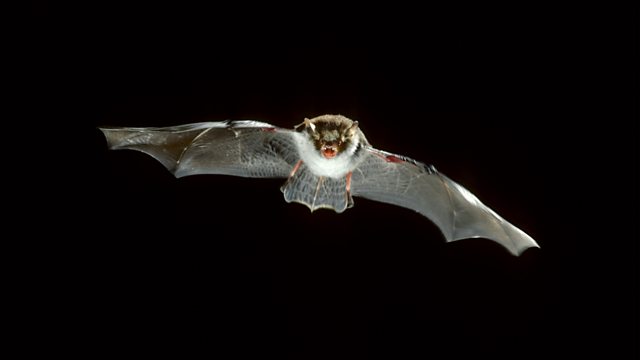
Echolocation (Summer Repeat)
Melvyn Bragg and guests discuss how animals such as bats and dolphins evolved to use high frequency sounds to navigate their environments and find their prey.
Melvyn Bragg and guests discuss how some bats, dolphins and other animals emit sounds at high frequencies to explore their environments, rather than sight. This was such an unlikely possibility, to natural historians from C18th onwards, that discoveries were met with disbelief even into the C20th; it was assumed that bats found their way in the dark by touch. Not all bats use echolocation, but those that do have a range of frequencies for different purposes and techniques for preventing themselves becoming deafened by their own sounds. Some prey have evolved ways of detecting when bats are emitting high frequencies in their direction, and some fish have adapted to detect the sounds dolphins use to find them.
With
Kate Jones
Professor of Ecology and Biodiversity at University College London
Gareth Jones
Professor of Biological Sciences at the University of Bristol
And
Dean Waters
Lecturer in the Environment Department at the University of York
Producer: Simon Tillotson.
In Our Time podcasts
Download programmes from the huge In Our Time archive.
The In Our Time Listeners' Top 10
If you鈥檙e new to In Our Time, this is a good place to start.
Arts and Ideas podcast
Download the best of Radio 3's Free Thinking programme.
Podcast
-
![]()
In Our Time
Melvyn Bragg and guests discuss the ideas, people and events that have shaped our world.

